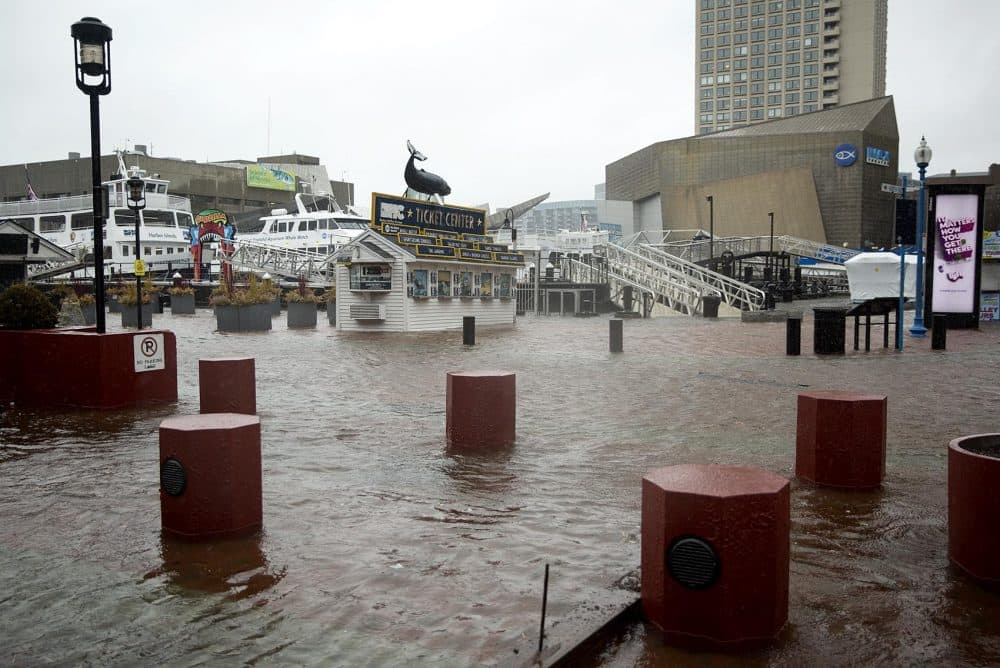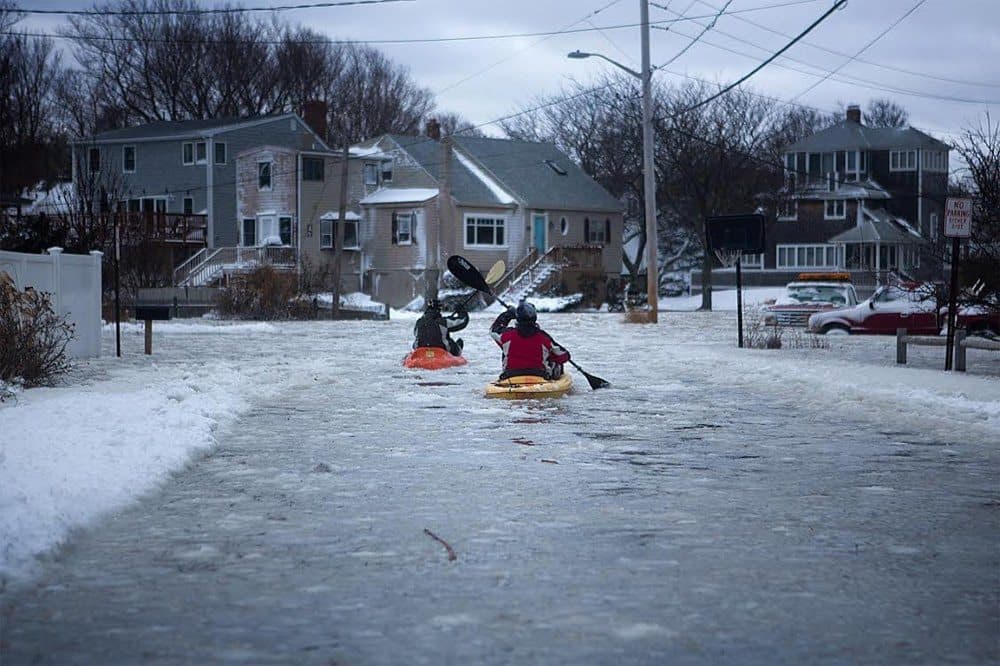Advertisement
Commentary
How Cities Are Leading The Way On Climate Change

The recent commitments to make Boston carbon neutral by 2050 — by the city of Boston, Boston University, Harvard University and others — is an encouraging sign that local leaders understand the threat of climate change and the need for decisive action.
Without strong action, it is likely that we will see continued increases in heat waves, rising seas, more intense storms and more destructive wildfires. On all of this the scientific consensus is strong.
The public, alas, remains unmoved — either rejecting the science outright, resigned to the inevitability of forces that can’t be stopped, or hoping that the worst effects of climate change will happen to other people, someplace else.
How do we mobilize the public to meet the goals we’ve set?
We draw attention to the new evidence that shows how solutions to the climate crisis can have immediate and local benefits for our own health. Steps aimed at mitigating or reversing the effects of climate change will result in dramatic near-term improvements in health, especially for the more than half of the world’s population who live in cities.

Cities are where the ill effects of sea level rise, severe storms, heat waves and air pollution are usually the most severe, but also are where action to solve climate change has been most active in recent years.
One of the biggest benefits of climate action is clean air.
Most steps that cities can take to eliminate greenhouse gas emissions, such as clean vehicles and renewable energy for buildings, lead directly to fresher, healthier air. The results are fewer sick days and less medication for children who suffer from asthma. It also means longer life expectancies, by reversing the gradual but insidious pollution-caused changes in our bodies that can result in heart disease or lung cancer.
These benefits begin immediately and can be large. The Clean Power Plan proposed under the Obama administration, for example, would have resulted in thousands of fewer premature deaths per year, hundreds of thousands of fewer missed days of school or work due to illness, and many other near-term health benefits. The Trump administration has proposed to eliminate the Clean Power Plan, coming at a high cost to human health.
In addition to clean air, increasing the prevalence of low-carbon transportation options, by designing cities that weave walking and biking opportunities into the fabric of everyday life, can help people get moving. According to recent studies, even small shifts away from commuting by car can have profound benefits for our heart health and help to reduce the risk of obesity, heart disease and diabetes.
City leaders, health scientists and the news media can be crucial allies in shaping this narrative of the positive benefits of acting on climate.
If the local health benefits of climate action are so large and obvious, why aren’t more cities mobilizing to take advantage of them?
Some cities have made a good start, at least rhetorically: More than 7,500 local jurisdictions have signed on to the Global Covenant of Mayors for Climate & Energy, each with the promise of specific steps aimed at achieving the steps toward carbon neutrality enshrined in the Paris Accords. The question is whether mayors can sustain their commitments, and turn them into actual policy, in the face of a federal government, led by the president, who assail the need for any action at all.
Part of the challenge is in translating the rapidly emerging science on health benefits into information that can be used by the public and local decision makers. Scientists don’t always communicate their findings in clear, broadly accessible language. They need to do better, as do the journalists covering this issue. Too often the media focuses on melting glaciers, rising sea levels and the increased severity of storms, leaving unsaid the positive benefits of acting on climate now.
Because of the vast effects of climate change across almost every sector, a multidisciplinary, collaborative approach to communicating climate solutions is essential. City leaders, health scientists and the news media can be crucial allies in shaping this narrative of the positive benefits of acting on climate.
A baby born this year will turn 32 in the year Boston is scheduled to become carbon free. If we do our jobs now, we will have done our part to improve global climate. And we’ll have given her a desirable, modern, healthy city in which to live.
The Boston University School of Public Health and the Pulitzer Center are hosting a symposium on these themes at BU on April 20.

